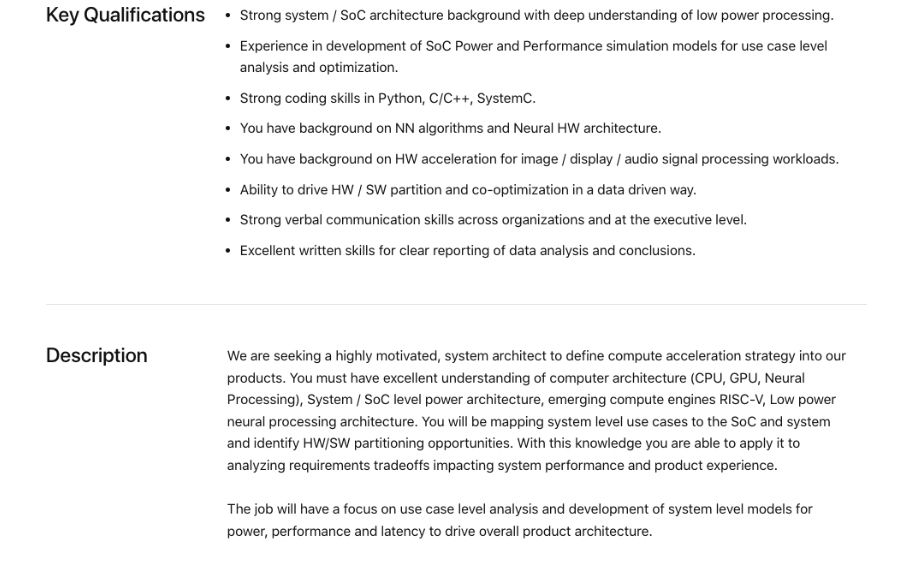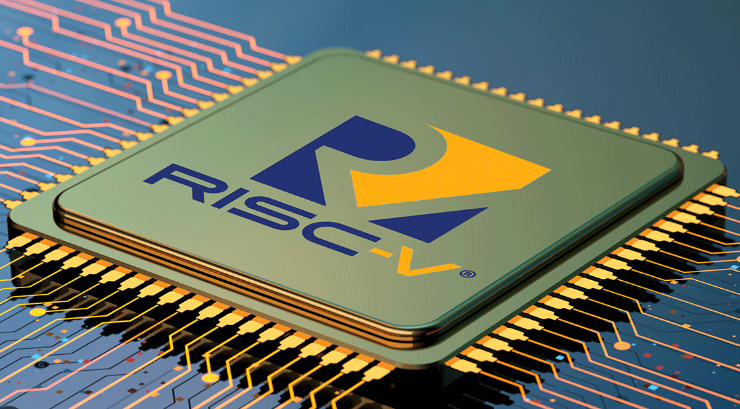In September last year, SemiAnalysis analyst Dylan Patel once wrote that Apple is moving its embedded core to the RISC-V architecture.
Dylan Patel pointed out that even though many people think that RISC-V lacks a software ecosystem, he still believes that RISC-V is quickly becoming the new processor standard. According to reports, Apple’s A15 chip is distributed with more than a dozen Arm-based CPU cores for various non-user-facing functions. But in Dylan Patel’s view, these cores are being actively converted to RISC-V in future generations of hardware.
As one of the hottest architectures in recent years, RISC-V has rapidly soared in global popularity. According to Calista Redmond, CEO of RISC-V International, at the end of last year, there were billions of RISC-V cores on the market at that time, and it is expected that there will be billions more by 2023, as companies and countries around the world All are embracing RISC-V. In terms of application, Calista Redmond also emphasized that RISC-V is moving from the embedded market to the data center, and we can see it landing in the data center soon.
What is certain is that RISC-V is the general trend of the world, and Apple has finally “officially announced” its entry into RISC-V in a recent recruitment.
Hiring architects, Apple enters RISC-V
Looking at the RISC-V member list, we will find traditional chip giants such as Huawei, Intel, Qualcomm, MTK, and Nvidia. In the list, we even find ADI, Infineon, Silicon, ST, Renesas, and NXP, etc. Simulate leading companies. However, as an important part of the chip industry, we did not find Apple in it.
But as mentioned above, their recent architect recruitment leaked their “secret”. According to Apple, the company is looking for a proactive system architect to define a computing acceleration strategy for the product.
According to Apple, you must have a good understanding of computer architecture (CPU, GPU, neural processing), system/SoC level power architecture, emerging computing engine RISC-V, low power neural processing architecture. You will map system-level use cases to SoC and system, and identify HW/SW partition opportunities.
“With this knowledge, you can apply it to analyze the demand trade-offs that affect system performance and product experience. The work will focus on use-case-level analysis and develop system-level models of power, performance, and latency to drive overall product architecture. This cross-functional role requires excellent people skills, working with departments such as Camera Module, Architecture and System EE. Specific job requirements are listed below.
Judging from this job description, the position Apple recruited is more likely to apply RISC-V to the field of low power consumption or accelerated computing, which is consistent with the practice of many manufacturers.
As a company with a rich product line, in addition to the proud A-series chips for mobile phones, Apple also has the M-series chips that have been popular in recent years. In addition, the H-series chips for headphones and the U-series chips for UWB are also well-known products by Apple. From the previous reports of the semiconductor industry observation, we can see that Apple is still planning more WiFi and Bluetooth chips. These two fields have been aggressively invaded by RISC-V. I believe this is also the primary focus of Apple RISC-V.
Of course, as Dylan Patel said, coprocessors in large chips will also be another direction where Apple RISC-V can be applied. This has also been practiced on giants such as Nvidia and Intel. Recently, AMD also revealed the company’s views on RISC-V in its latest product release.
According to foreign media anandtech, on the newly released Alveo MA35D, AMD is transferring the management processor in its ASIC VPU based on the 4nm process from Arm to RISC-V. According to anandtech, on the previous generation U30, this processor uses a quad-core Cortex-A53 core, but when it comes to the VPU of the MA35D, it uses a pair of quad-core RISC-V cores. “The RISC-V architecture has been quietly rolling out to Arm for such management controllers, which is another example of that shift,” anandtech emphasized. This is actually one of the options for RISC-V to land.
If these overseas giants choose RISC-V to get a bargaining chip with Arm, or to give the company one more choice. Then, RISC-V manufacturers in mainland China are more like desperate. In other words, they made a big bet on RISC-V.
Chinese manufacturers make huge bets, RISC-V blossoms globally
Whether it is a mobile phone, PC, embedded or marginal market, Arm has become a favorite. This has a lot to do with the fact that Arm has spent huge sums of money to lay a solid ecology in the past ten years, which also leads to the gradual adoption of this simplified instruction set architecture in many fields. However, the relationship between China and the United States in recent years has made Arm’s position a bit mysterious, which has promoted the vigorous development of the open-source RISC-V architecture in China.
According to RISC-V International’s website, 13 of the 22 top RISC-V international members are from China, including Beijing Open Source Chip Research Institute, Alibaba Cloud, Tencent, SIM Computing, and ZTE. Looking at the participating manufacturers at all levels of RISC-V International, we have seen many Chinese manufacturers.
From the current point of view, the first task of these manufacturers is to take a share of the embedded market with RISC-V, because this is the most promising RISC-V landing scenario, which is also the domestic RISC-V-based MCU and vertical fields. The reason for the rapid development of the application. At the same time, domestic manufacturers also want to push RISC-V to high-end chips such as edge computing and even servers to find more opportunities.
In addition, according to the observation of the semiconductor industry, some traditional domestic chip giants have even abandoned the previously commonly used processor architecture and turned to the more open RISC-V, such as Espressif and Ingenic are typical representatives.
First of all, look at Espressif. In the past, they used Tensilica processing for most chips, but now they have developed their own RISC-V core and plan to fully switch to RISC-V to develop products that better meet their needs. For example, Espressif uses a RISC-V core in its latest ESP32 wireless microcontroller. Ruian Zhang, Espressif’s CEO and president, confirmed the shift earlier in the report, saying the company will focus on parts built around the free and open-source RISC-V instruction set architecture. Asked on LinkedIn, Zhang made it clear: RISC-V is the way forward for the company.
As a once very important MIPS buyer in China, Beijing Junzheng is also turning to RISC-V through self-developed core.
When accepting investor surveys, Junzheng said that in the past four to five years, the company has been focusing on the research and development of RISC-V, and currently some products have used the company’s self-developed RISC-V small core for real-time processing. At the same time, the company has developed a RISC-V large core that is benchmarked against the ARM53 and ARM55 series, and is currently developing a mid-to-high-end core that is benchmarked against ARM.
“Our future products will transfer from the current MIPS architecture core to the RISC-V core. At the same time, we can support the AI engine very well in the development of the core. This next step will help us in the AIOT product line. Competitiveness.” Beijing Junzheng emphasized.
Outside of mainland China, RISC-V is also blooming all over the world. For example, in Taiwan, China, there are top IP suppliers; not to mention in the United States, in addition to high-performance IP suppliers, there are also risc-v-based chiplet designs to help create high-performance computing chips.
The list goes on and on. Industry insiders believe that for those applications that do not require much ecological support (stopping at Linux), RISC-V will explode with huge capabilities.
Arm digs its own grave, the balance tends to RISC-V
For RISC-V, one advantage they still have now is the self-defeating of the strongest competitor Arm.
On the one hand, according to the Financial Times at the end of March, Arm is looking to increase the price of its chip designs, pushing prices more aggressively in its existing royalty and licensing sales model, and shifting previous royalties from The previous change related to chip pricing has become equivalent to the whole mobile phone.
On the other hand, Arm is still in a lawsuit with Qualcomm, which involves expenses related to licensing and acquisitions, which will also become a big reference for the industry’s future development direction of Arm.
When Arm encountered various problems, RISC-V was overcoming various barriers step by step, planning for a compatible and recognized future.
Back to Apple, considering that Apple has had great success in the past with its processor architecture changes from PowerPC, to X86, to Arm. Perhaps in the near future, we may see this giant make more attempts on RISC-V. Because, nothing is impossible.
Post time: Apr-18-2023



